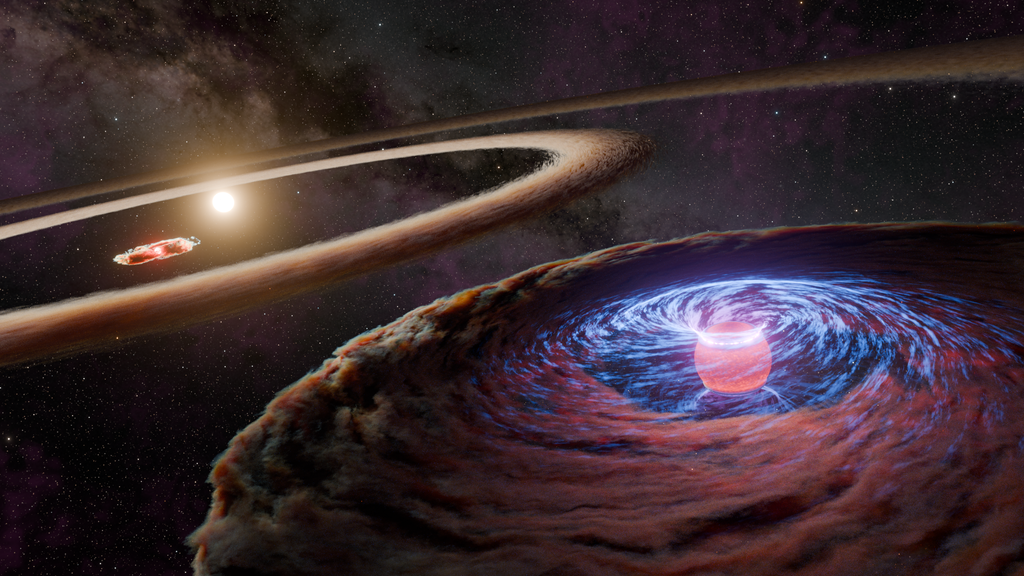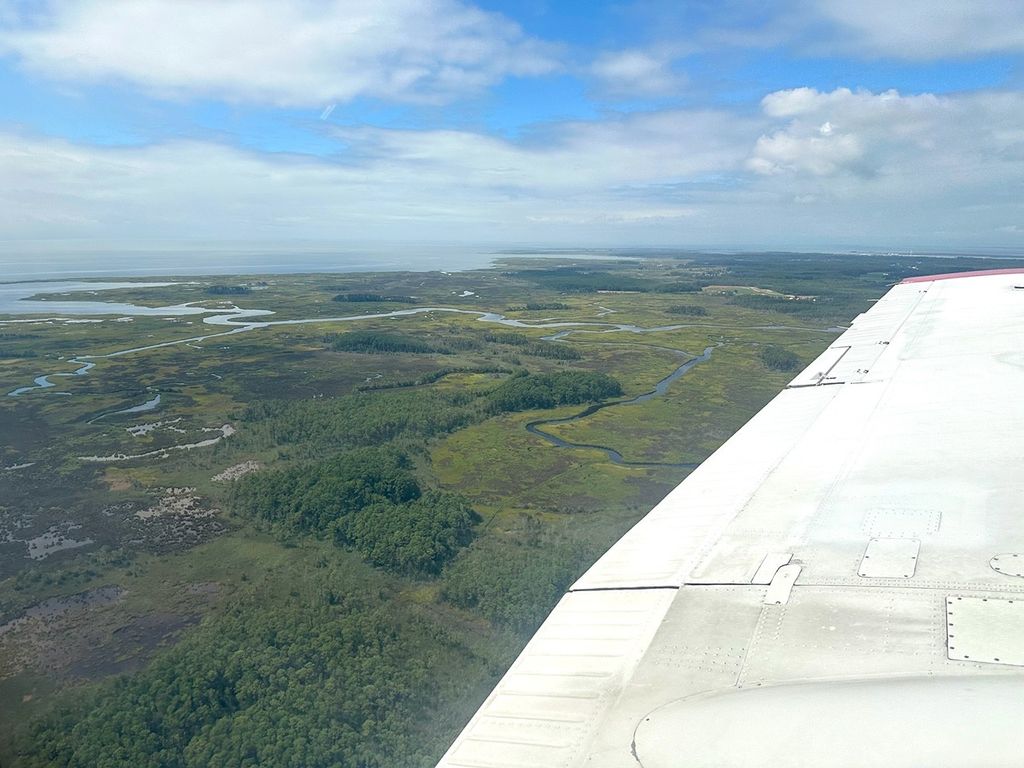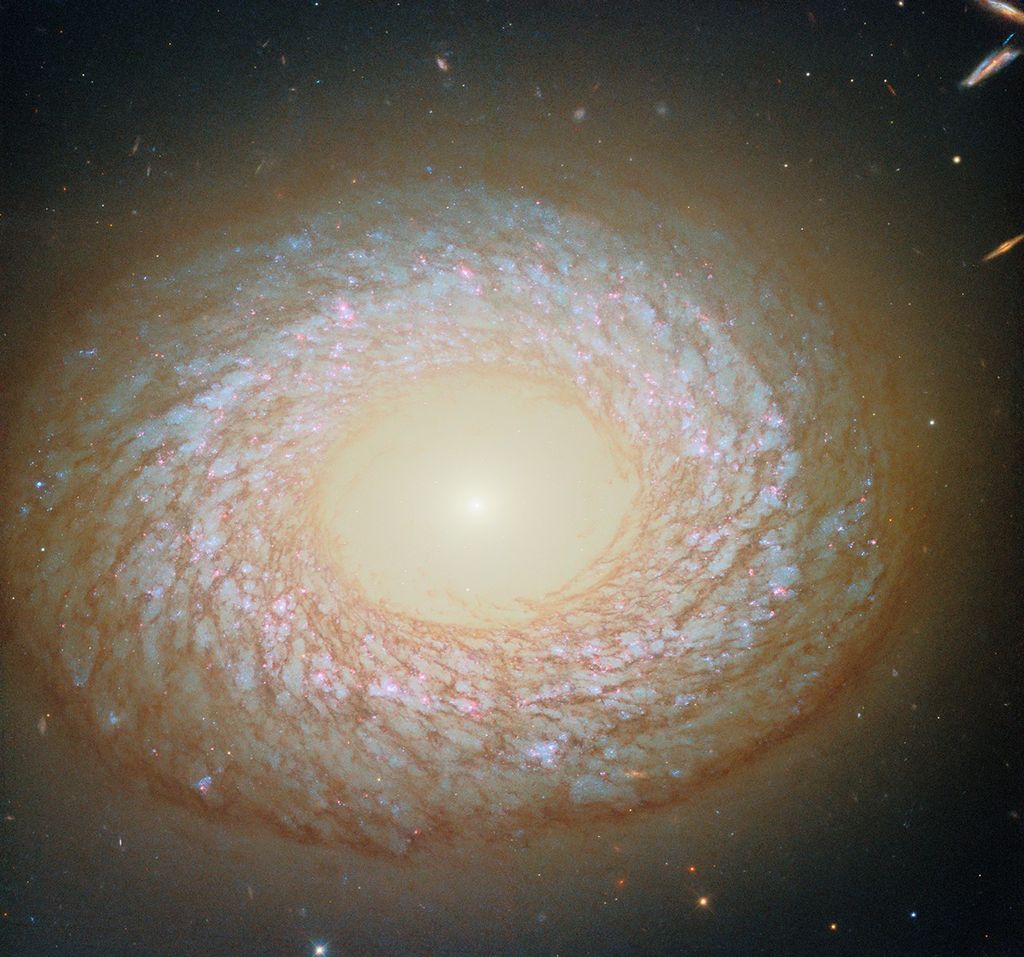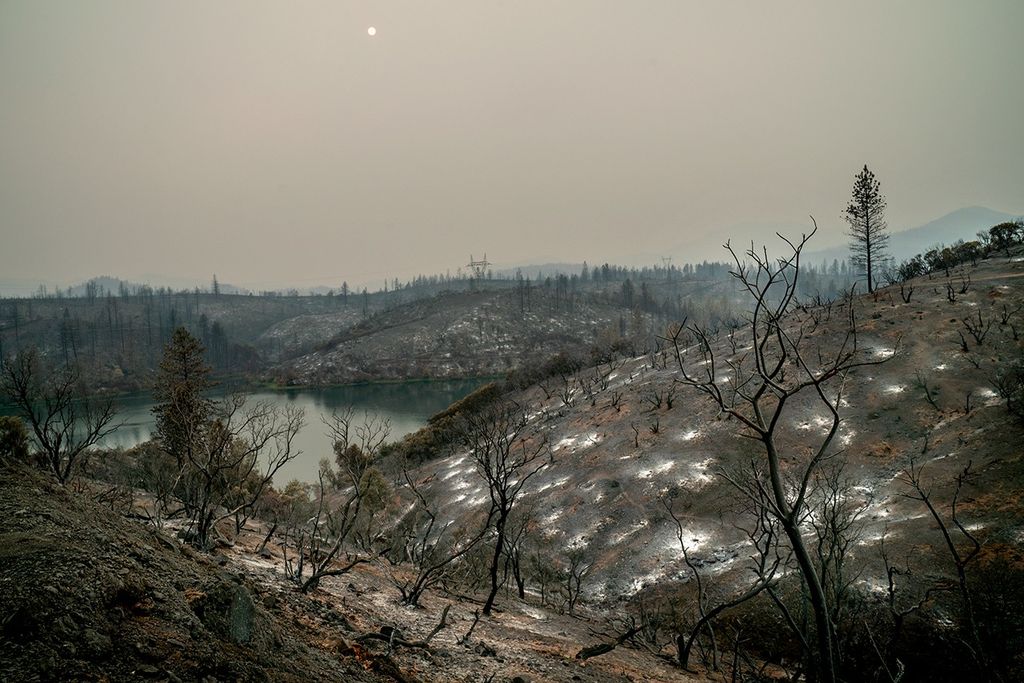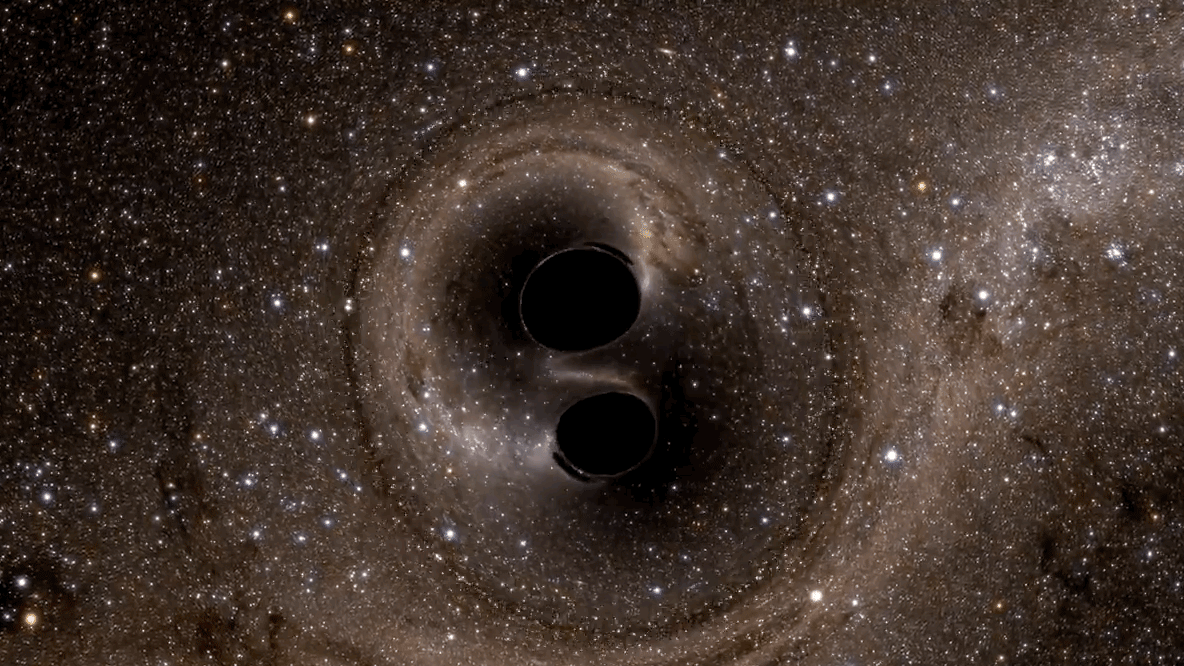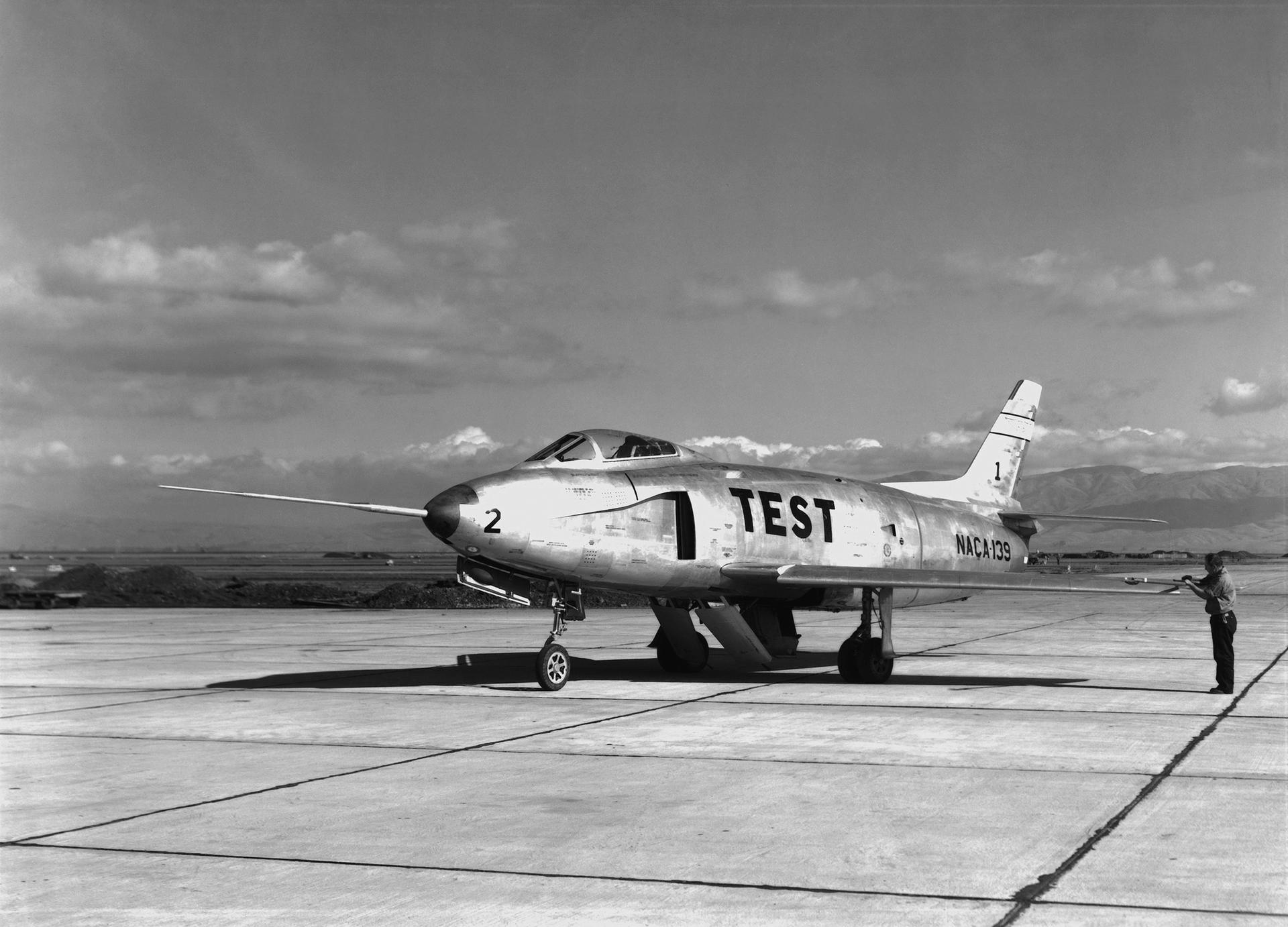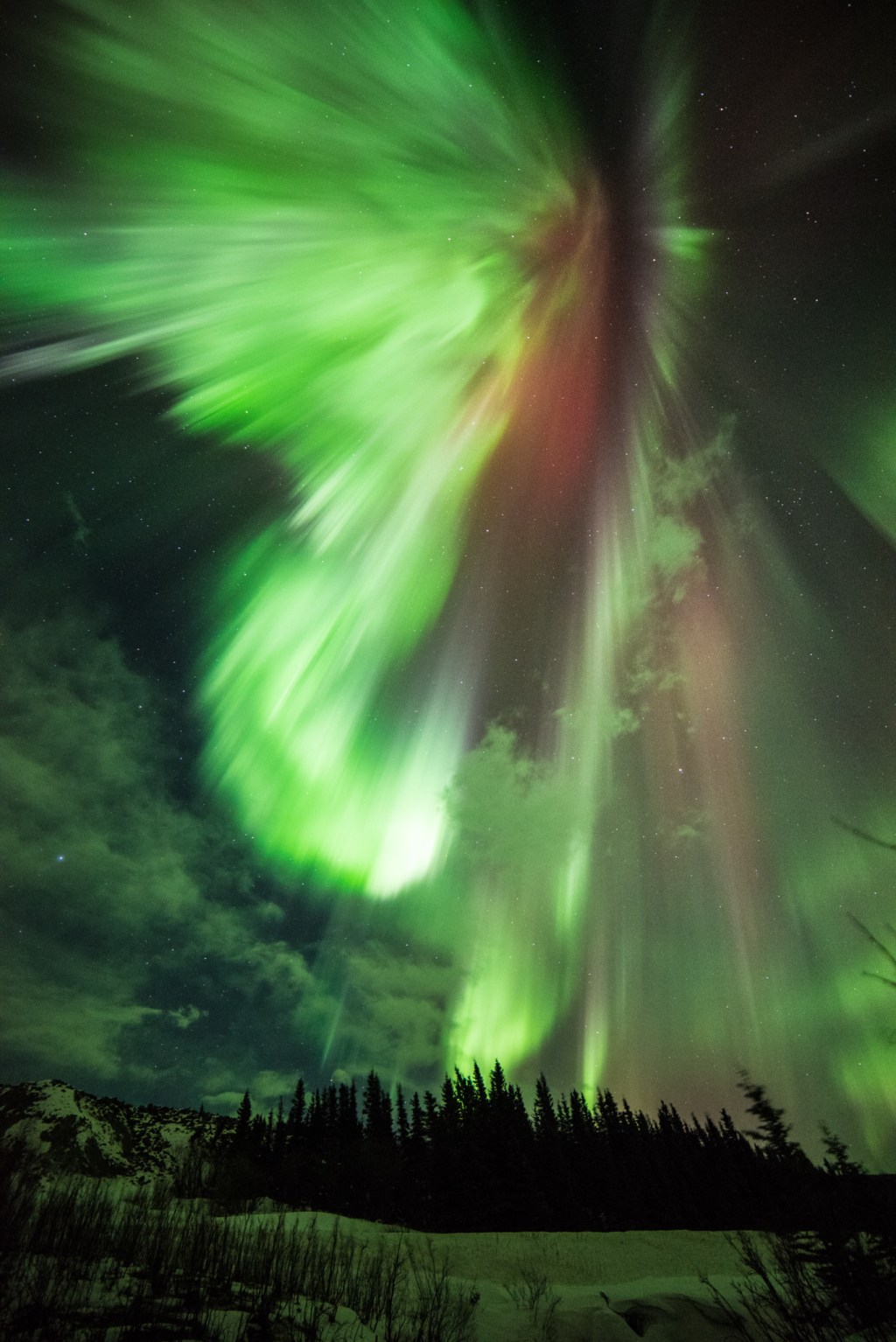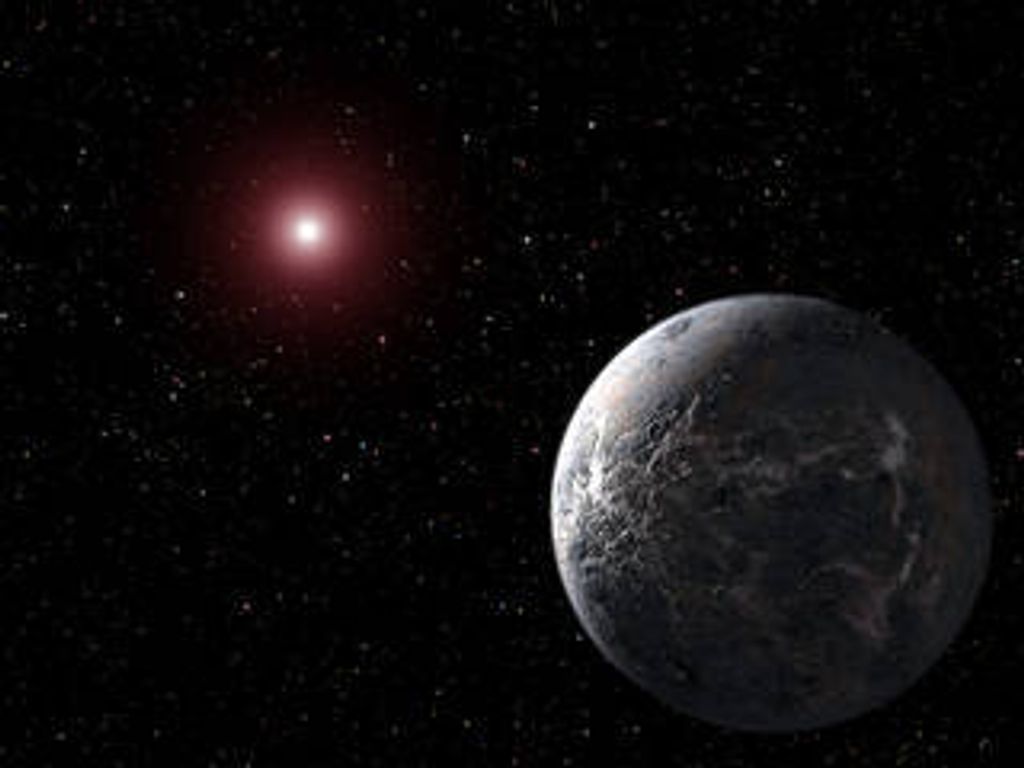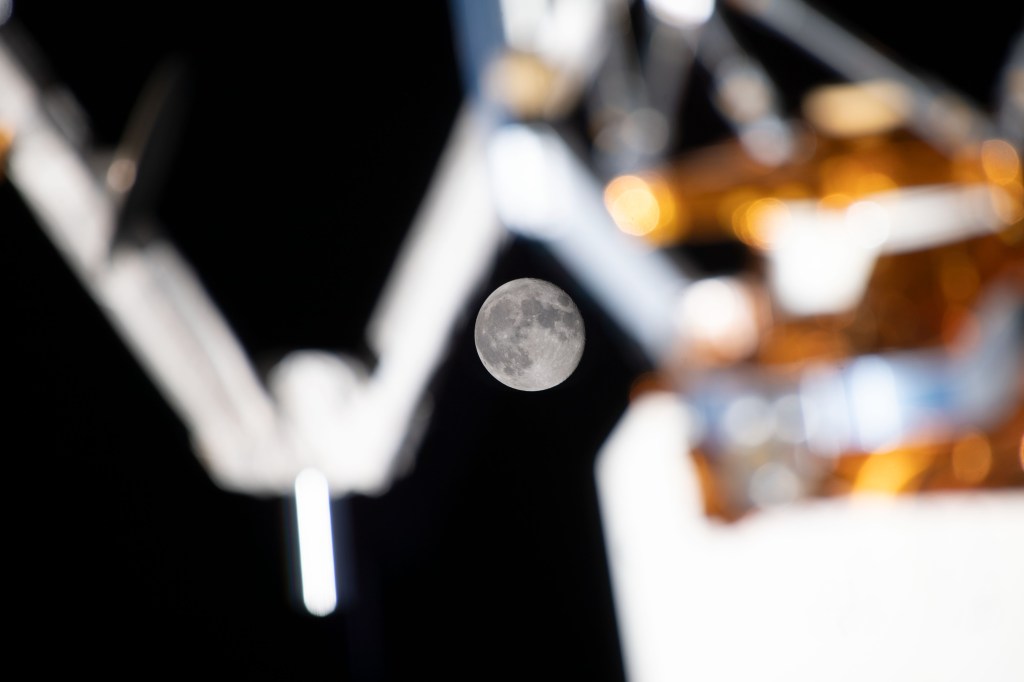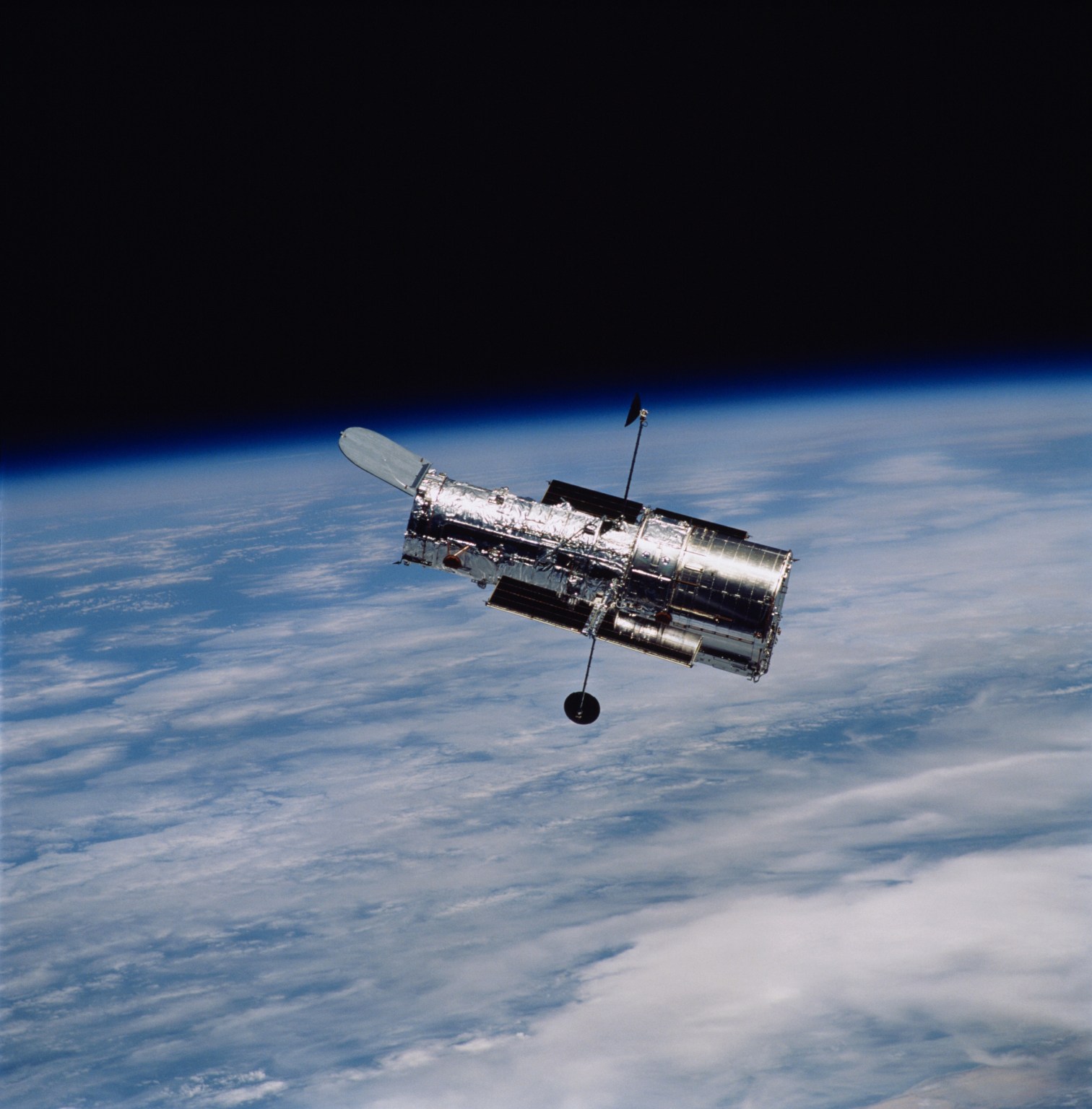1 min read
Disk of Debris Around Red Dwarf Star AU Microscopii

A visible-light image of a debris disk around the red dwarf star AU Microscopii. Planets may be forming, or might already exist, within it. The disk glows in starlight reflected by tiny grains of dust created by the collisions of asteroids and comets. Because it is composed of the pulverized remnants of these objects, it is called a "debris disk." More than 40 billion miles across, it appears like a spindle of light because we view it nearly edge on (like looking at a dinner plate along its side). The star is about 12 million years old and is only 32 light-years from Earth. This makes its disk the closest yet seen in reflected starlight. It is also the first disk imaged around an M-type red dwarf, the most common type of star in the stellar neighborhood around the Sun. The Hubble Space Telescope images, taken with the Advanced Camera for Surveys (ACS) reveal that the disk has been cleared of dust within about a billion miles of the star (first indicated from infrared-light measurements).
The ACS images confirm that the disk is warped and has small variations in dust density that, along with the central clearing, may be caused by the tugging of an unseen companion, perhaps a large planet. ACS shows that this is the only debris disk known that appears bluer than the star it surrounds. This may indicate that there are more small grains of dust, compared to large ones, than has been seen before in other such disks. Smaller grains scatter blue light better than red. The surplus of small grains may be due to the fact that the star is not bright enough to blow away these tiny particles. In brighter, hotter stars, the pressure from radiation can actually push small dust grains out of the disk and far out into space.
About the Object
- R.A. PositionR.A. PositionRight ascension – analogous to longitude – is one component of an object's position.12h 19m 6.5s
- Dec. PositionDec. PositionDeclination – analogous to latitude – is one component of an object's position.16° 32' 53.89"
- ConstellationConstellationOne of 88 recognized regions of the celestial sphere in which the object appears.Microscopium
- DistanceDistanceThe physical distance from Earth to the astronomical object. Distances within our solar system are usually measured in Astronomical Units (AU). Distances between stars are usually measured in light-years. Interstellar distances can also be measured in parsecs.Approximately 33 light-years (10 parsecs)
About the Data
- Data DescriptionData DescriptionProposal: A description of the observations, their scientific justification, and the links to the data available in the science archive.
Science Team: The astronomers who planned the observations and analyzed the data. "PI" refers to the Principal Investigator.This image was created from HST data from the following proposals, 9987 and 10330: H.C. Ford (JHU), J. Krist (STScI), and M. Clampin (GSFC). Members of the science team include: D.R. Ardila (JHU); D.A. Golimowski (JHU); J.E. Krist (STScI/JPL); M. Clampin (NASA/Goddard); J.P. Williams (UH/IfA); J.P. Blakeslee (JHU); H.C. Ford (JHU); G.F. Hartig (STScI); G.D. Illingworth (UCO-Lick) and the ACS Science Team. - InstrumentInstrumentThe science instrument used to produce the data.HST>ACS/HRC
- Exposure DatesExposure DatesThe date(s) that the telescope made its observations and the total exposure time.April 3, 2004, Exposure Time: 1.4 hours
- FiltersFiltersThe camera filters that were used in the science observations.F606W (V)
- Object NameObject NameA name or catalog number that astronomers use to identify an astronomical object.AU Microscopii, AU Mic, GJ 803, HD197481
- Object DescriptionObject DescriptionThe type of astronomical object.Spectral Type "M0" Star with Debris Disk
- Release DateDecember 9, 2004
- Science ReleaseSpitzer and Hubble Capture Evolving Planetary Systems
- Credit

Related Images & Videos
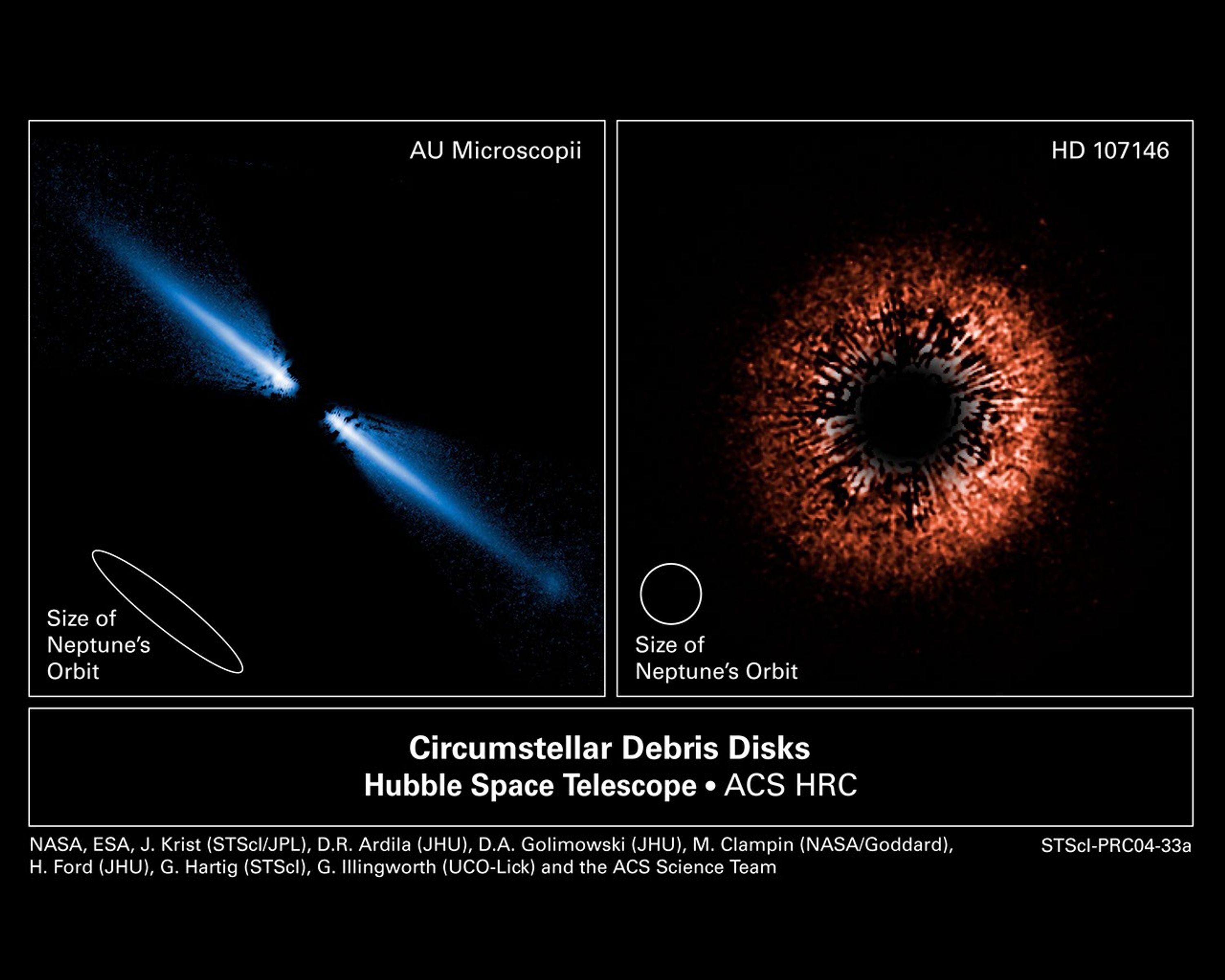
Debris Disks Around Sun-Like Stars AU Microscopii and HD 107146
[LEFT: AU Microscopii] - A visible-light image of a debris disk around the red dwarf star AU Microscopii. Planets may be forming, or might already exist, within it. The disk glows in starlight reflected by tiny grains of dust created by the collisions of asteroids and comets....

Planetary Debris Disk Encircling Yellow Dwarf Star HD 107146
This is a false-color view of a planetary debris disk encircling the star HD 107146, a yellow dwarf star very similar to our Sun, though it is much younger (between 30 and 250 million years old, compared to the almost 5 billion years age of the Sun). The star is 88 light-years...

The View from Within AU Microscopii's Disk
This is an artist's impression of the view from the vicinity of a hypothetical terrestrial planet and moon orbiting the red dwarf star AU Microscopii. The relatively newborn 12 million year-old star is surrounded by a very dusty disk of debris from the collision of comets,...

Model of AU Microscopii Disk
This is a so-called scatter model based on the Hubble Space Telescope image of the planetary debris encircling the star AU Microscopii. Though the real disk is tilted nearly edge-on to Earth, this oblique view is from 30 degrees above the disk plane. This model clearly shows a...

Is There Anybody Home?
NASA's Spitzer Space Telescope recently captured these infrared images of six older stars with known planets. The yellow, fuzzy clouds are discs of dust, or "debris discs," like the one that surrounds our own Sun. Though astronomers had predicted that stars with planets would...

A Distant Solar System (Artist's Concept)
This artist's concept depicts a distant hypothetical solar system, similar in age to our own. Looking inward from the system's outer fringes, a ring of dusty debris can be seen, and within it, planets circling a star the size of our Sun. This debris is all that remains of the...
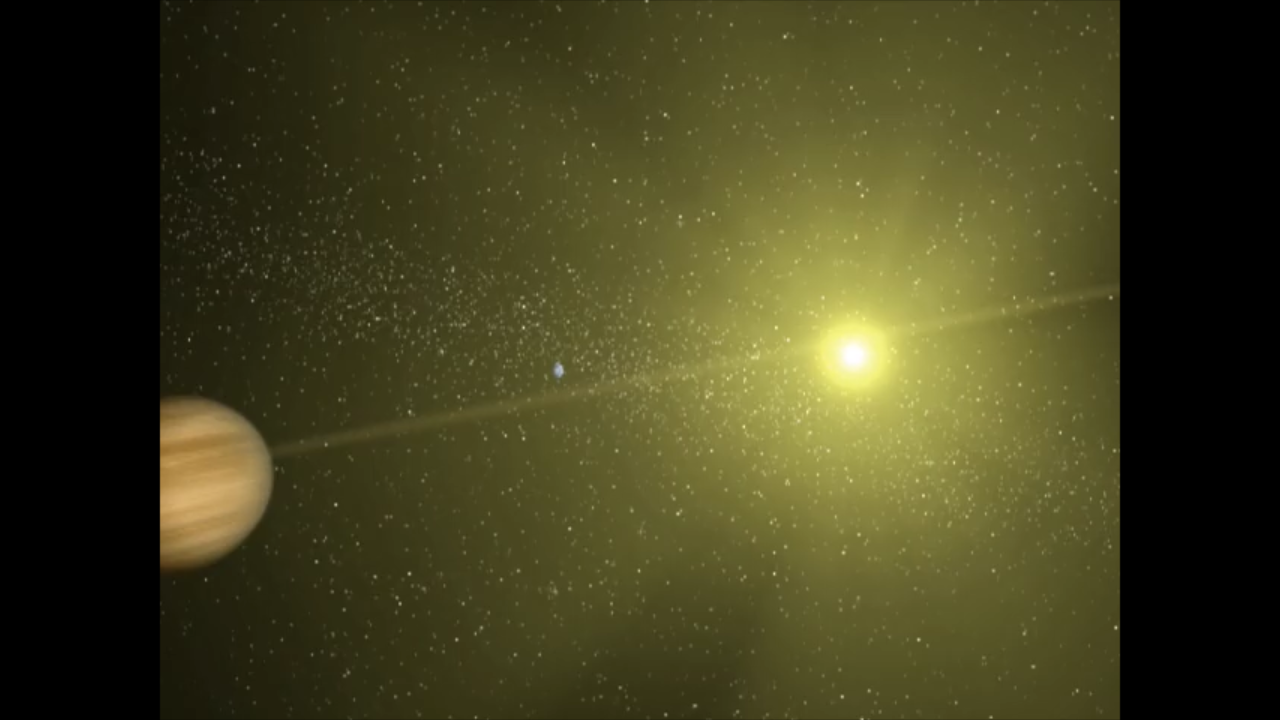
Artist's Concept of a Debris Disk Outside a Planetary System
This animation portrays an artist's concept of a distant hypothetical solar system, about the same age as our own. It begins close to the star, and then moves out past a number of planets. Though "extrasolar" planets are too small to be seen with telescopes, astronomers have...
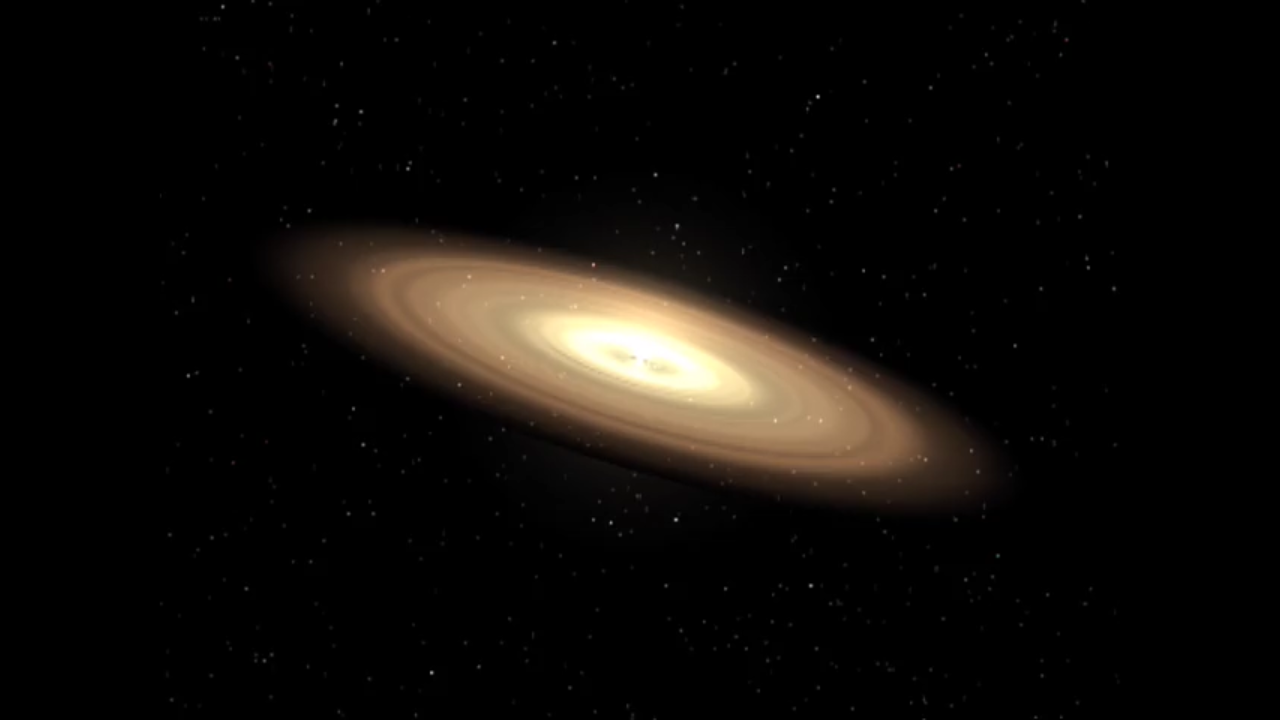
Animation of the Development of a Debris Disk into a Planetary System
This animation shows the evolution of a planet-forming disc around a star. Initially, the young disc is bright and thick with dust, providing raw materials for building planets. In the first 10 million years or so, gaps appear within the disc as newborn planets coalesce out of...
Share
Details
Claire Andreoli
NASA’s Goddard Space Flight Center
Greenbelt, Maryland
claire.andreoli@nasa.gov

